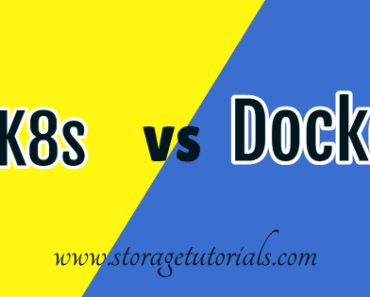Containers and virtual machines (VMs) serve the purpose of isolating applications but operate on different principles. Containers share the host OS kernel, leading to lightweight and rapid deployment, while VMs encapsulate an entire OS, offering greater isolation. Understanding these distinctions is crucial for optimizing infrastructure choices.
Container and virtual machines (VMs) are both commonly used methods for deploying applications and workloads. But what exactly is the difference between the two?
This article on Container vs VM, provides an in-depth look at containers and VMs, their key characteristics, and how they compare.
Table of Contents
What is a Container?
A container is a standalone, executable package that includes everything an application needs to run: the application code, runtime components like libraries and dependencies, and config files.
All of this is bundled into an image that can be easily distributed and run on any system-supporting container.
When running a container, it uses the host operating system’s kernel but runs in an isolated user space.
Resources like CPU, memory, and storage can be limited for each container. The containerized application thinks it is running on its own virtual system, but it is actually sharing the host OS. This makes containers very lightweight and fast to spin up.
Multiple containers can run on the same host and share the OS kernel, allowing higher efficiency and density versus VMs.
Some key characteristics of containers:
- Isolated user space: Process isolation and segmentation of duties
- Portable: Can be run on any system supporting container runtime
- Lightweight: Share host OS kernel, fast to start up
- Standardized: Use common standards like Docker and OCI specs
- Self-contained: Bundles all dependencies and config
- Scalable: Easily replicable across hosts
What is a Virtual Machine?
A virtual machine (VM) is an emulation of a full computer system. Hypervisors like VMware and VirtualBox allow you to create and run virtual machines on top of the host hardware.
The hypervisor creates a layer between the virtual and physical hardware, effectively decoupling the VM from the underlying host.
Each VM includes a full operating system, and virtual hardware like CPU, storage, and memory. The guest OS runs on top of this virtual layer like real hardware. In fact, applications running inside a VM are unaware they are on a virtual platform.
Some key characteristics of VMs:
- Full virtualization: Completely isolates an entire OS from the host
- Emulated hardware: Creates virtual CPU, memory, storage, network
- Abstraction: The VM does not know it is virtualized
- Encapsulated: VMs are fully packaged with their own OS and configs
- Hardware compatibility: Requires full hardware emulation support
- Heavier weight: Requires a full OS boot, takes time to start up
- Limited density: More resource intensive than containers
You May Also Like: Filebeat VS Logstash
Difference Between Containers and VMs (Container vs VM)
Now that we have an overview of what each technology provides, let’s look at some key differences between containers and VMs:
- Isolation level – Containers provide operating-system level virtualization and thus have a more limited scope of isolation whereas VMs provide full hardware virtualization and thus have a broader system isolation scope.
- Infrastructure – Containers share the host OS kernel and thus do not require a hypervisor or full virtual hardware stack whereas VMs emulate hardware and need a hypervisor to manage multiple VMs.
- Startup speed – Containers have faster startup times, typically in seconds, since the OS does not have to boot up. However, VMs have to load a full OS, which takes minutes.
- System resources – Containers impose less overhead and allow a higher density of applications per host. VMs require more resources to emulate hardware.
- Management – Containers are designed to be lightweight and ephemeral, while VMs are fully isolated and designed for longer uptime.
- Use cases – Containers are useful for scalable application and microservices architectures. VMs provide full system isolation required for some workloads.
In summary, containers provide fast, lightweight OS virtualization optimal for application deployment and microservices. VMs provide hardware virtualization with strong isolation suitable for diverse workloads like development environments.
Understanding these differences allows for architecting an optimal environment using each technology where appropriate.
| Criteria | Containers | VMs |
|---|---|---|
| Isolation level | Operating-system level virtualization | Full hardware virtualization |
| Infrastructure | More resources are needed for emulating hardware | Emulate hardware, requires a hypervisor |
| Startup speed | Faster startup (typically seconds) | Slower startup (usually minutes for OS boot-up) |
| System resources | Less overhead, higher density of applications | More resources needed for emulating hardware |
| Management | Lightweight and ephemeral | Fully isolated, designed for longer uptime |
| Use cases | Scalable applications, microservices | Workloads requiring full system isolation |
Conclusion
Containers and VMs take different approaches to workload isolation and have distinct benefits.
Containers provide operating system virtualization by isolating processes, allowing lighter weight and faster startup. VMs emulate hardware, providing complete system isolation, but at the cost of greater resource usage.
When choosing between the two, consider factors like isolation needs, startup time, density, and management. Containers are great for scalable and cloud-native applications using microservices. VMs suit workloads needing full system virtualization like development environments. Many modern environments leverage both containers and VMs to realize the benefits of each.




